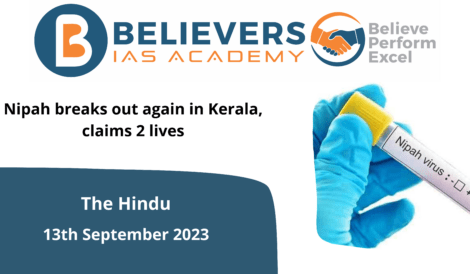What was discussed at the UN water conference?
Context:
- Because water problems are typically local, the water industry is prone to fragmentation. As a result, there is an inherent problem with mobilizing internationally for local issues.
- The conference culminated in 713 voluntary pledges from philanthropic donors, governments, corporations, and non-governmental organizations (NGOs). This included a $50 billion commitment from India under the Jal Jeevan Mission to improve rural drinking water systems.
- The most recent UN Water Conference convened in 1977, was historic in that it produced the first global “Action Plan.”
Points to ponder:
- The United Nations Water Conference was convened in March 2023 to address the urgent need for action to achieve the 2030 Sustainable Development Goal for water.
- Because local water issues necessitate local solutions, the water sector is fragmented, making global mobilization for local problems difficult.
- Many drinking water initiatives have failed due to variables such as groundwater over-abstraction and contamination, making long-term access to water and sanitation difficult.
- Achieving sustainable agribusiness, industry, and natural ecosystems is also difficult, requiring difficult political decisions and stronger democracies.
- The meeting resulted in 713 voluntary pledges from philanthropic donors, governments, corporations, and non-governmental organizations (NGOs), including a $50 billion pledge from India to improve rural drinking water services.
- Proposals for water management incubation platforms and knowledge-sharing tools, such as the W12+ Blueprint, were addressed.
- Making Rights Real and the Water for Women Fund are two initiatives that seek to assist marginalized communities and women in exercising their rights and achieving more effective and sustainable water, sanitation, and hygiene results.
- It is unclear whether these promises will become legally binding as a result of the COP process.
- The most recent UN Water Conference was convened in 1977, and it resulted in the first global ‘Action Plan’ recognizing the right of all people to safe drinking water.
- Extending services to underserved groups is relatively straightforward, but maintaining access to water and sanitation necessitates tackling issues such as groundwater over-abstraction and contamination.
- Given that we are not on track to achieve the 2030 Sustainable Development Goal for water, the conference recognized the need for action.
- The challenges of attaining sustainable water management necessitate the collaboration of numerous agencies and ministries.
- Various stakeholders made voluntary commitments at the conference to handle the challenges and better access to water, sanitation, and hygiene.




